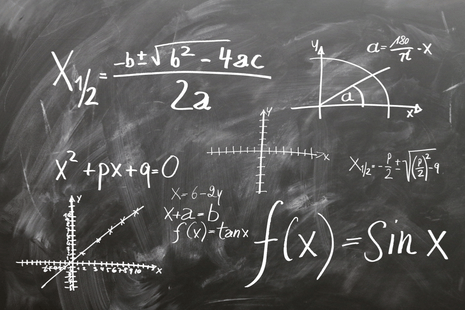
Scoring high in the IIT JAM Physics Exam can get you admission in a highly competitive postgraduate program in physics in top IITs. IIT JAM Exam is a national-level exam conducted annually in rotation by IITs and IISc. The exam will be conducted on February 15th, 2026, this year under IIT Bombay. The topics and questions in this subject are more focused on a comprehensive and in-depth understanding of core Physics. They analyse your problem-solving skills at the undergraduate level and prepare you for advanced studies and research in physics and allied disciplines.
Before appearing for the exam, you must have a proper understanding of the most frequently asked questions and paper patterns with the best strategies by the subject experts. The exam emphasises both theoretical and numerical hold of the student through 3 different question formats: MCQs (with negative marking), MSQs (no negative marking), and NAT (Numerical Answer Type) questions. The syllabus covers major topics including Mathematical Methods, Classical & Modern Physics, Thermodynamics, Electronics, and Solid State Physics .
By getting and MSc Degree through IIT JAM Physics Exam , you can build your career in academia, research labs, government agencies, and industry. As you complete the degree, you can explore options like becoming a scientist, researcher, lecturer, analyst, developer, government scientist, or private sector R&D professional.
This article includes Top 10 IIT JAM Physics Questions Answered by Experts, carefully selected after studying PYQs trends from 2016–2025, expert video solutions, and preparation insights.
What Makes a Question Important in IIT JAM Physics?
In IIT JAM Physics, questions that are frequently carried forward on a year-on-year basis in the exam should be practiced more by you while preparing for the exam. They hold the highest importance as they define different patterns of questions for the same concept or types of questions that are synced with the exam cycles. There are a total of 60 questions in this three-section, divided paper. MCQs allow negative marking (−1/3 for 1-mark, −2/3 for 2-mark questions), while MSQs and NATs don’t.
Mathematical Methods, Mechanics, Magnetism and Electricity, and Modern Physics have been some of the frequently asked questions in IIT JAM Physics Exam. These questions generally involve multi-step reasoning, cover multiple units, and show repetitive patterns. If you analyse and identify such questions, you can focus on them as they can help improve your grades, enhance your accuracy, and make your attempt more efficient.
Top 10 IIT JAM Physics Questions with Expert Answers
Question 1: How to master SHM and Damped Oscillations?
Expert Insight:
A key topic that often comes as numerical NATs. You must know about phase difference, energy changes, and graph-based questions. Practice questions where damping changes motion type. IFAS PYQ Book (2024 Edition) is useful here.
Question 2: What are the common mistakes in Bohr Model problems?
Expert Insight:
Bohr Model appears in Modern Physics every year. Students usually miss selection rules or misapply quantization. Remember allowed transitions (Δn), use r(n)=n2a0r(n) = n^2a_0, and always check units. Refer to JAM 2022 & 2024 Modern Physics PYQs.
Question 3: How to solve numerical errors in significant digits and scientific notation?
Expert Insight:
This comes in Mathematical Physics for error analysis. Even simple rounding errors cost marks. Be consistent with rounding, and apply the error propagation formula. See JAM 2021, Section A for reference.
Question 4: What is the difference between Group Velocity and Phase Velocity?
Expert Insight:
A frequent confusion in Wave Physics, and an important NAT area. Derive relations vg=dω/dkv_g = d\omega/dk, vp=ω/kv_p = \omega/k. Use simple graphs to avoid mistakes. Refer to JAM 2017 & 2024.
Question 5: How are Maxwell’s Equations applied at dielectric boundaries?
Expert Insight:
Very commonly tested in Electricity & Magnetism. Write conditions for E-field and D-field continuity. Apply Gauss’s Law and Ampere’s Law. See JAM 2020 & 2024 PYQs.
Question 6: What are the selection rules in atomic transitions (spectroscopy)?
Expert Insight:
Modern Physics MSQs often ask this directly. Memorize Δl=±1\Delta l = \pm 1, and apply parity conservation. Refer JAM 2019 spectroscopy section.
Question 7: How to check if a system is conservative using potential energy diagrams?
Expert Insight:
Mechanics questions often use energy diagrams. Check if the work done in a closed path is zero. Look for minima in the potential curve. JAM 2025 PYQs had such diagrams.
Question 8: What defines equilibrium stability in mechanics?
Expert Insight: Frequently tested in Oscillations. Use the second derivative test: d2Udx2>0\frac{d^2U}{dx^2} > 0 means stable. Practice spring-mass and pendulum PYQs (JAM 2018).
Question 9: How do thermal and electrical conduction relate in metals (Wiedemann–Franz Law)?
Expert Insight:
Links theory with experiment in Solid State Physics. Apply κ/(σT)=L\kappa/(\sigma T) = L. Keep Lorentz numbers of common metals in memory. Asked in JAM 2019.
Question 10: How does the Fermi energy change with temperature?
Expert Insight: A high-weightage topic in Solid State & Devices. At low T, Fermi energy is almost constant. At higher T, small changes occur due to electron distribution. See JAM 2023 Devices section.
Expert-Recommended IIT JAM Physics Preparation Advice
IIT JAM Physics requires proper practice with a strategy. You need a balance of theory questions along with the application-based questions. Another crucial aspect is to ensure familiarity with exam-like settings since this helps with confidence for the real test.
- Habitualise revision of mathematical physics, as it creates the foundation for every topic.
- Focus on the 10 most important areas, such as Electrostatics, Thermodynamics, Optics, SHM, and Quantum Mechanics.
- Work through at least past 15 years of solved papers, with IFAS practice material being a reliable resource.
- Use video lectures by experts to simplify and apply complex problem-solving methods.
- Take mock tests to become more efficient and write the exam more accurately, increasing the potential to get a better score.
Also Check:
| Top 10 IIT JAM Mathematics Questions Answered by Experts | Top 10 IIT JAM Biotechnology Questions Answered by Experts |
|---|---|
| Top 10 IIT JAM Economics Questions Answered by Experts | Top 5 Chemical Bonding Questions You Must Practice for IIT JAM Chemistry 2026 |
Are you feeling lost and unsure about what career path to take after completing 12th standard?
Say goodbye to confusion and hello to a bright future!

FAQs
Rather than looking for one best book for IIT JAM Physics practice, it is best to think strategically and study using a combination of various resources. You can check for IFAS compilation books covering 2005 to 2014 papers alongside the standard books like Resnick-Halliday and specialised preparation materials. The best approach is to first get a complete conceptual grasp completely from standard reference materials, and then move forward to PYQ compilation
Mathematical physics takes up around 15-18% of total questions. These can be seen as both direct problems and within other physics topics that need mathematical analysis. These can be seen in each of the sections, be it MCQ, MSQ, and NAT.
While there is no repetition of the exact same questions from the previous year's papers. There is a repetition of similar problem patterns and concepts. The practice of previous year papers is important because through this, you can understand the focus of questions and the repeating themes. Regular practice can help you define your method for handling new problems that are based on similar concepts. Some of the main concepts, such as logical flow and types of problems, are more often revisited in the paper.
The difficulty level for IIT JAM Physics Exam is moderate to difficult. You must have a strong base knowledge as well as problem-solving skills across the physics syllabus. Application-based questions must be well practiced. Moreover, recent analysis states that there is a balanced mix of easy and challenging questions, with sections like modern physics and electrodynamics requiring more in-depth and strategic understanding.
Was this article helpful?





















Similar Articles
PSU Opportunities After Qualifying CSIR NET Exam
PSU Recruitment Process for CSIR NET-qualified Candidates
CSIR NET 2025 Application Form Correction: Check Dates, Process, Details to Edit
CSIR NET 2025 December Session: Steps to Retrieve Application Number & Password
CSIR NET E-Certificate: How to Download, Validity, Documents Required, Instructions
How to Prepare for CSIR NET in 3 months